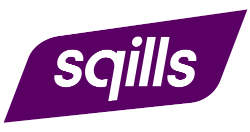The European Court of Auditors (ECA) describes high-speed railways within the EU as ‘an ineffective patchwork of national lines without proper coordination across borders’ in their latest report.
The auditors analysed 50% of lines in countries that included Austria, Portugal, Germany, Italy, Spain, and France.
In many other countries across the globe, including China and Japan, high-speed rail is considered an innovative transport mode. When compared to other methods of transportation, including air travel, high-speed rail offers several key benefits. Not only is it environmentally sustainable, but it is also safe, flexible and typically much faster. It would also help to develop a greater sense of European unity in that it would bring European citizens closer together by connecting with one another far easier.
Part of the problems that the ECA report highlights is the fact that a European high-speed rail network does not really exist as of right now. What we have are national lines that are not connected with one another. Given that this is not a priority for many nationally owned railway operators, it should make it obvious that this is not a problem that will be solved quickly.
To demonstrate what this means for the average consumer, we are going to give you an example of a fictional character, Thomas. Thomas lives in Marseille, France. He wants to visit his girlfriend Marie who recently moved abroad. The only problem is that she currently lives in Hessen, Germany.
Thomas cannot simply get on a plane and see her, because there is no direct flight between both locations. This means that he would have to switch airlines at some point, which also means additional costs and travel time. Not to mention the risk of missing the flight and being stuck at the airport.
Unfortunately, a high-speed rail is not a great alternative for Thomas. It might pass some of the busier airports in France, but there is no direct connection (nor are there immediate plans to develop one) between the international high-speed rail networks. This means that Thomas not only has problems with accessibility, but he also faces additional costs and may even have problems with ticketing.
The reality of the situation is that Thomas likely needs to take a conventional train, switch to a high-speed train, and eventually switch back to a conventional train when he gets closer to his destination.
While Thomas might be a fictional character, this scenario is a reality for many citizens across the EU. The European high-speed rail network is a ‘network’ only in name. The reality is that these national high-speed rail lines are being built without any real international connection. That is because the member states responsible are planning and building these lines in isolation. Especially along the national borders, this means poor connections between the different lines.
The good news is that the ECA still believes that the European high-speed rail sector can be successful, provided several chances are implemented. Part of the reason that the vision of a high-speed rail network is currently unfeasible is that there are too many conflicting standards and no coherent strategy. Despite already investing €23.7bn, the EU is no closer to making high-speed passenger travel easier for European consumers.
One of the examples mentioned by the ECA to improve the seamless high-speed rail operations for passengers is e-ticketing and improving general sales availability for consumers.
While Sqills cannot force more frequent connections between stations and better overall accessibility to train stations, its revolutionary booking, reservation and revenue management software system can prove to be a key factor in not only helping European high-speed rail acquire a larger market share, but simultaneously make the high-speed rail far more attractive to consumers.
By using a single integrated suite, there would be no more need for multiple tickets and consumers would be able to get a clear overview of their fare price.
Just one of the ways that Sqills can help rail operators become more competitive.
If you want to know more about the way S3 Passenger changes the rail and bus industry, fill out the enquiry form on this page for a demo or read about our earlier experiences with leading operators.

